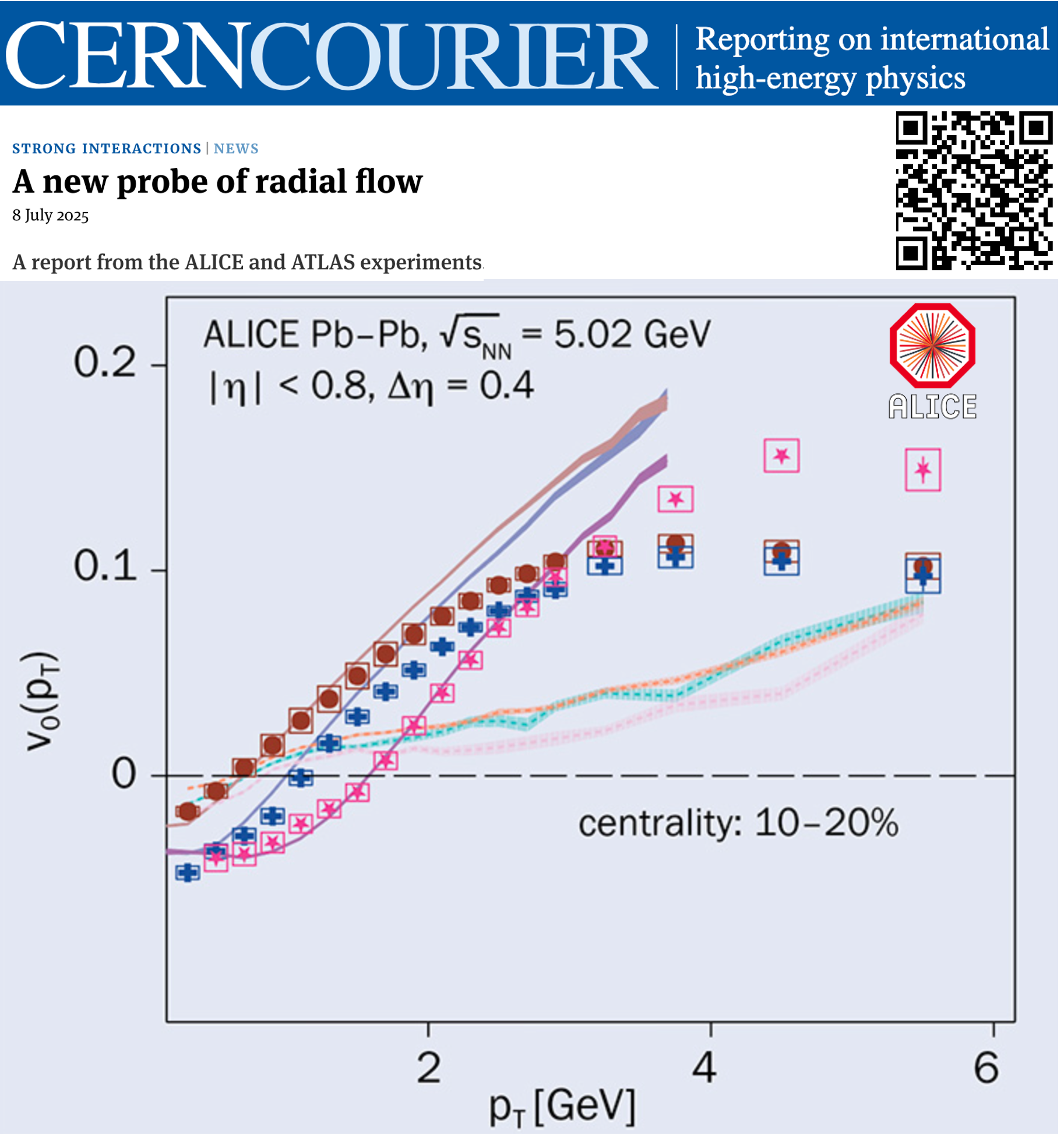
CERN Courier (July - August 2025) Energy Frontier
A new probe of radial flow (8 Jul 2025)
- A report from the ALICE and ATLAS experiments
ALICE Collab. 2025 arXiv:2504.04796
ATLAS Collab. 2025 arXiv:2503.24125
The ALICE and ATLAS collaborations have announced the first results of a new way to measure the “radial flow” of quark–gluon plasma (QGP). The two analyses offer a fresh perspective into the fluid-like behaviour of QCD matter under extreme conditions, such as those that prevailed after the Big Bang. The measurements are highly complementary, with ALICE drawing on its detector’s particle-identification capabilities and ATLAS leveraging the experiment’s large rapidity coverage.
At the Large Hadron Collider, lead–ion collisions produce matter at temperatures and densities so high that quarks and gluons momentarily escape their confinement within hadrons. The resulting QGP is believed to have filled the universe during its first few microseconds, before cooling and fragmenting into mesons and baryons. In the laboratory, these streams of particles allow researchers to reconstruct the dynamical evolution of the QGP, which has long been known to transform anisotropies of the initial collision geometry into anisotropic momentum distributions of the final-state particles.
ALICE measurements of radial flow as a function of pT for pions, kaons and protons in mid-central (left) and peripheral (right) Pb–Pb collisions at a centre-of-mass energy of 5.02 TeV. The measurements are compared to state-of-the-art hydrodynamic-based model calculations (Hydro) and a non-collective model (HIJING). Credit: ALICE Collab. 2025 arXiv:2504.04796
More details in: A new probe of radial flow (8 Jul 2025)
